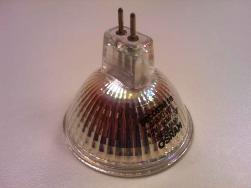Categories: Featured Articles » Sources of light
Number of views: 267265
Comments on the article: 25
Lighting at 12 volts in the house - what are the advantages and disadvantages?
 To an uninitiated person, such a question may even seem strange. How could the idea of using 12-volt luminaires and lamps in residential premises be born when the standard for household voltage in our country is 220 volts? Let's try to figure it out.
To an uninitiated person, such a question may even seem strange. How could the idea of using 12-volt luminaires and lamps in residential premises be born when the standard for household voltage in our country is 220 volts? Let's try to figure it out.
Advantages and reasons for the popularity of voltage 12 volts
First of all, 12 volts is an extra-low voltage, considered conventionally safe for human life and health. For this reason, in rooms with a high or increased degree of danger, the use of 12-volt lamps is welcomed by the rules of PUE.
Bathroom, kitchen, outdoor courtyard - these are the places in which low-voltage lighting has always been preferable. And in cramped and damp basements, it is completely impossible to operate a 220 volt network, and a step-down transformer is required even for power supply portable power consumers.
Wiring 12 volts does not require a reverent attitude, allows you to save on protective materials, such as corrugated pipe or cable channel. Anyway, the soul is much calmer when you know that the maximum that can happen in your lighting circuit is a ridiculous short circuit with the failure of a cheap transformer or the operation of a protection.
Fires, serious electric shock to people in the lighting circuit of 12 volts are practically excluded.
 But there is another reason why 12 volt lighting circuits have gained popularity in residential buildings and apartments. It's about the emergence and distribution spotlights.
But there is another reason why 12 volt lighting circuits have gained popularity in residential buildings and apartments. It's about the emergence and distribution spotlights.
These lamps radically changed the views on lighting as such. Therefore, they acquired the name "point", because their light should literally come from one point. And the traditional incandescent lamp, which was popular at that time, can only be called a point with a big stretch. Whatever you say, this is still an impressive bulb, if only, of course, its power is at least 60 watts.
Therefore, the idea arose to use compact spotlights halogen lamps. Bulbs of halogen lamps contain not only inert gas, but also vapors of some halogen, for example, iodine. During the evaporation of tungsten from an incandescent filament, a halogen interacts with metal atoms to form a tungsten halide. This same halide again settles on the filament, decays on it from exposure to high temperature and returns the filament to pure tungsten.
Thus, the wear of the filament of halogen lamps is very small compared to the wear of the filament of conventional lamps. This makes it possible to heat the lamp thread to a higher temperature, at which the smaller lamp shines brighter. It became possible to create a bright and durable compact halogen lamp.
It was then that it turned out that really low-voltage compact halogen lamps, the filament of which is thicker and designed for more current, are really durable and reliable. Therefore, the idea was implemented to install in the household lighting circuit fixtures with 12-volt halogen lamps, powered by compact low power transformersusually electronic. A similar scheme was already very popular when modern and reliable 220-volt compact halogen lamps began to be mass-produced.
So, what are the advantages of 12 volt household lighting networks? They consist of:
- safety and, as a result, the possibility of operation in hazardous areas;
- less stringent requirements for wiring;
- the absence of the need for qualified maintenance (a 12-volt lamp can be installed even by a person far from electrical engineering - there is no risk to health);
- the possibility of implementing additional lamp protection against overcurrent and voltage due to the transformer.
Disadvantages of lighting at 12 volts
 But 12-volt lighting has its drawbacks. The same transformer is an additional element of the circuit, which, firstly, has its own efficiency, and secondly, complicates the circuit, reducing its reliability. In addition, the transformer must be hidden somewhere, providing it with cooling. It must be selected according to the total power of the fixtures with the necessary reserve, otherwise it may not start or quickly fail. In a word, a transformer is already a whole mass of minuses.
But 12-volt lighting has its drawbacks. The same transformer is an additional element of the circuit, which, firstly, has its own efficiency, and secondly, complicates the circuit, reducing its reliability. In addition, the transformer must be hidden somewhere, providing it with cooling. It must be selected according to the total power of the fixtures with the necessary reserve, otherwise it may not start or quickly fail. In a word, a transformer is already a whole mass of minuses.
But the shortcomings do not end on the transformer. Another minus is that a low voltage network with equal power consumes more current. A larger current is a greater voltage drop across the wires. Therefore, when installing 12-volt lighting lines, you have to think about the length of the conductors from the transformer to each lamp being approximately the same. Otherwise, lamps located further down will shine less brightly.
Thus, the disadvantages of lighting at 12 volts are reduced to installation difficulties due to losses in the wires and the need to introduce a transformer into the circuit.
Alexander Molokov, https://env.electricianexp.com
We recommend reading:How to choose a wire cross section for 12 volt lighting networks
See also at bgv.electricianexp.com
:
